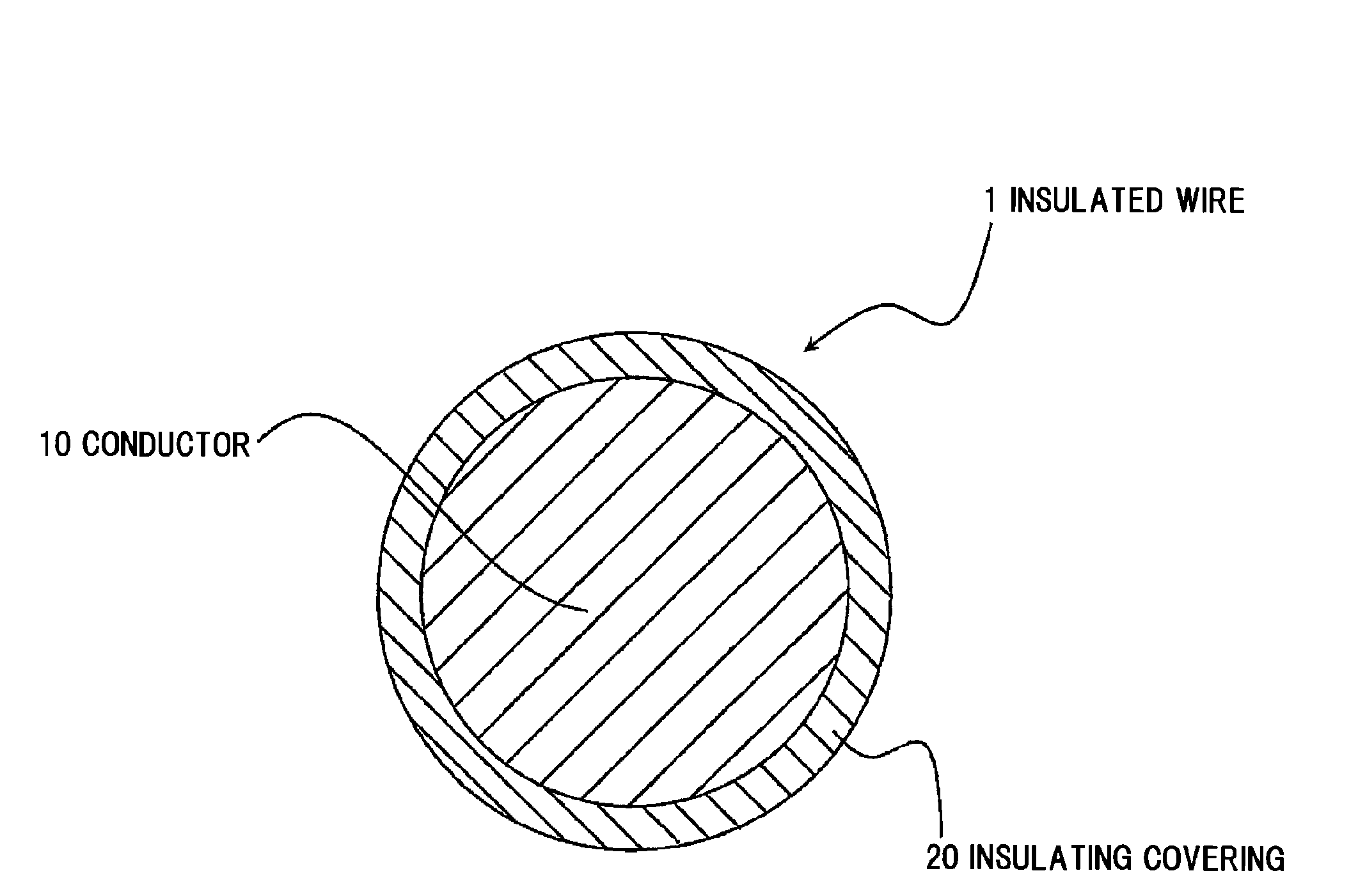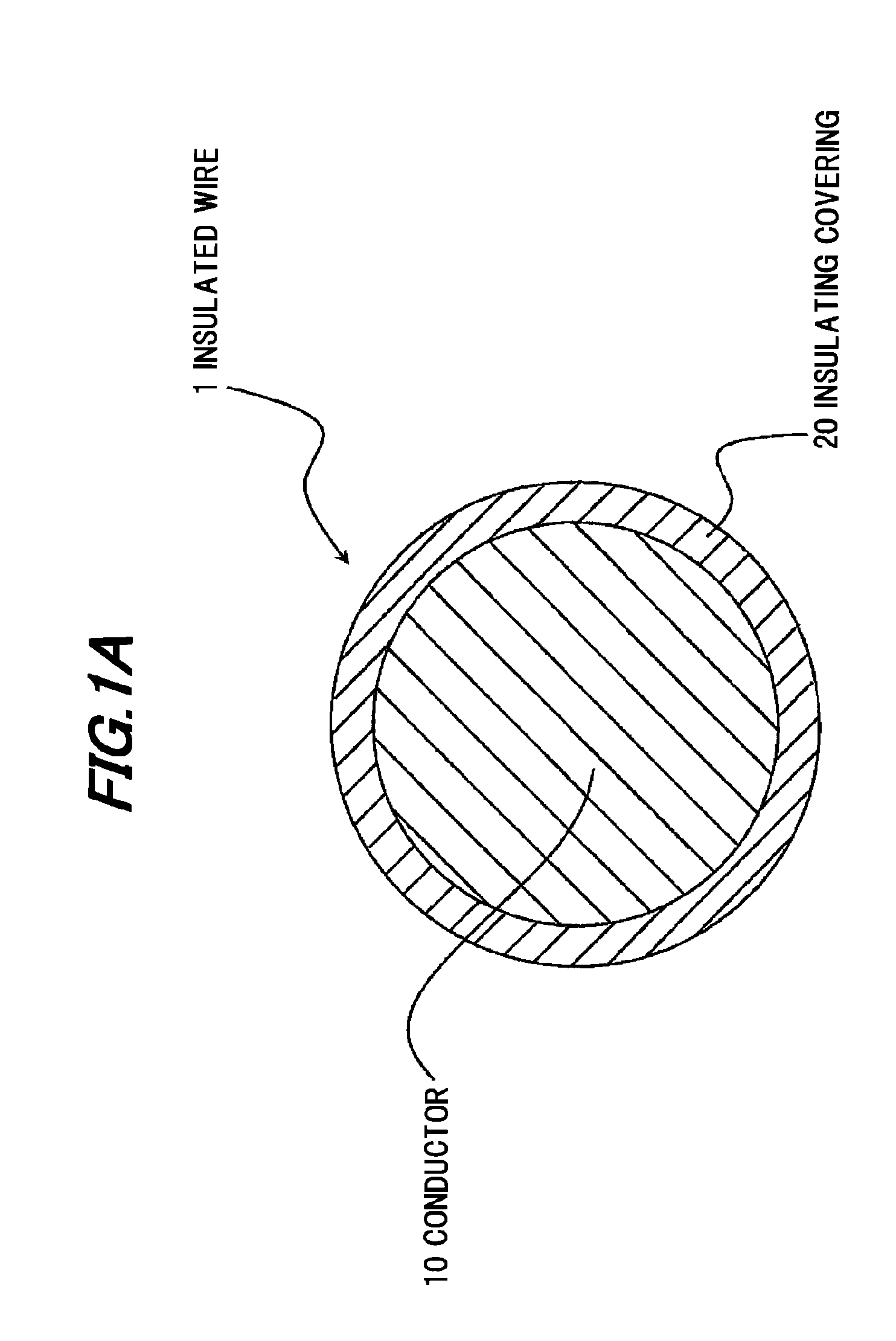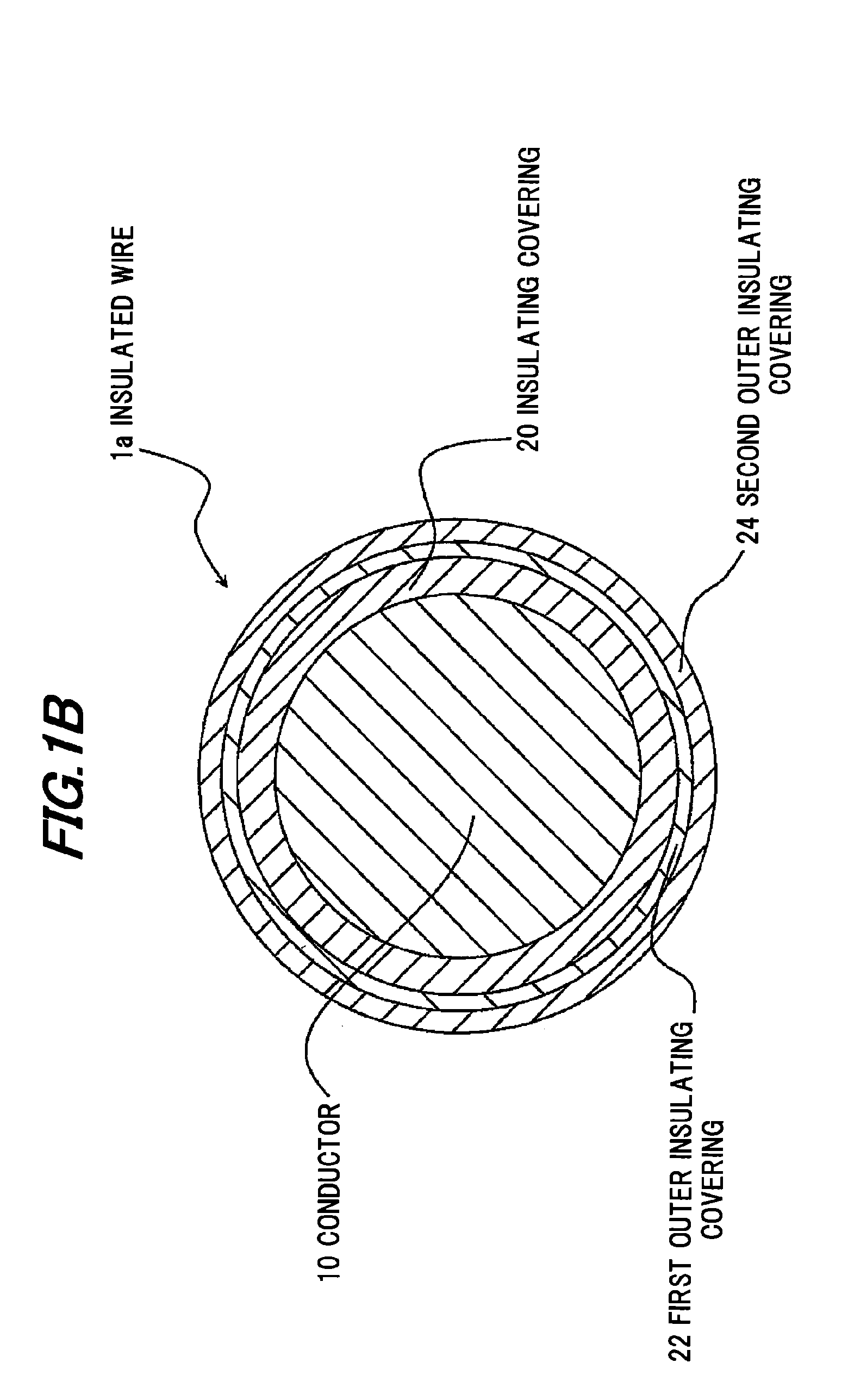Insulating varnish and insulated wire
a technology of insulating varnish and insulated wire, which is applied in the direction of plastic/resin/waxes insulators, synthetic resin layered products, transportation and packaging, etc., can solve the problems of dielectric breakdown and deterioration of the insulating covering of the insulated wire, and achieve the effect of reducing the dielectric constant, high adhesion to the conductor, and sufficient heat resistance of polyimide resin
- Summary
- Abstract
- Description
- Claims
- Application Information
AI Technical Summary
Benefits of technology
Problems solved by technology
Method used
Image
Examples
embodiments
[0045]Insulating Varnish
[0046]An insulating varnish in the embodiment of the invention is used to form a insulating covering for covering a conductor of a metal material such as oxygen-free copper and copper, and is formed of a polyimide resin composed of a repeat unit represented by a general formula (1) below and a repeat unit represented by a general formula (2) below.
[0047]For example, the insulating varnish of the embodiment can be formed of a polyimide resin represented by a general formula (10) below and composed of the general formula (1) and the general formula (2).
[0048]The general formula (10) represents a polyimide resin as a block copolymer that includes the repeat unit of the general formula (1) and the repeat unit of the general formula (2). Alternatively, the insulating varnish of the embodiment can be formed of a polyimide resin as an alternating copolymer or a random copolymer that includes the repeat unit of the general formula (1) and the repeat unit of the gener...
example 1
[0081]An insulating varnish in Example 1 is synthesized as below.
[0082]First, an Allihn condenser tube with a trap equipped with a silicone stop cock is attached to a 51 three-necked separable flask with a stirrer. Then, 125.1 g of bicyclo(2,2,2)octane-2,3,5,6-tetracarboxylic acid dianhydride (BTA-H, MW=250.2). 119.2 g of 3,3′-dimethyl-4,4′-diaminodicyclohexylmethane (DMHM, MW=238.42), and 1466 g of N-methyl-2-pyrolidone (NMP, MW=99.1) are weighed. Then, the weighed materials are put in the flask. Then, stirring at a rotation speed of 180 rpm, they are reacted at 180° C. for 8 hours (First reaction step). Then, 155.1 g of 4,4′-oxydiphthalic acid dianhydride (ODPA, MW=310.21), 100.1 g of 4′-diaminodiphenylether (p-DDE, MW=200.2) and 2041 g of N-methyl-2-pyrolidone are weighed and further put in the flask. Then, stirring at a rotation speed of 180 rpm, they are reacted at room temperature for 5 hours (Second reaction step). Then, 20 g of maleic anhydride is further put in the flask, a...
example 2
[0085]An insulating varnish in Example 2 is synthesized as in Example 1 except that in the first reaction step, 105 g of 4,4′-diaminodicyclohexylmethane (DAHM, MW=210.4) is added instead of 3,3′-dimethyl-4,4′-diaminodicyclohexylmethane (DMHM). An insulated wire in Example 2 is produced by the same steps as the insulated wire in Example 1 while using the insulating varnish in Example 2.
PUM
| Property | Measurement | Unit |
|---|---|---|
| temperature | aaaaa | aaaaa |
| heat resistance | aaaaa | aaaaa |
| thick | aaaaa | aaaaa |
Abstract
Description
Claims
Application Information
 Login to View More
Login to View More - R&D
- Intellectual Property
- Life Sciences
- Materials
- Tech Scout
- Unparalleled Data Quality
- Higher Quality Content
- 60% Fewer Hallucinations
Browse by: Latest US Patents, China's latest patents, Technical Efficacy Thesaurus, Application Domain, Technology Topic, Popular Technical Reports.
© 2025 PatSnap. All rights reserved.Legal|Privacy policy|Modern Slavery Act Transparency Statement|Sitemap|About US| Contact US: help@patsnap.com



